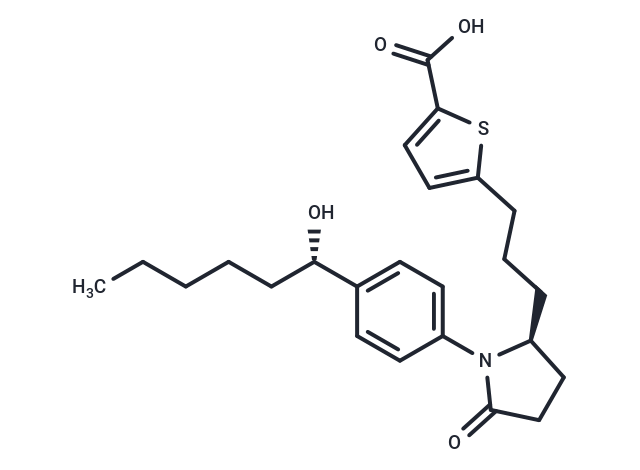Shopping Cart
- Remove All
 Your shopping cart is currently empty
Your shopping cart is currently empty

Aganepag, a potent Prostanoid EP2 receptor agonist, exhibits remarkable selectivity with an EC50 of 0.19 nM, demonstrating no activity at the EP4 receptor. Its applications are primarily in the fields of wound healing, scar reduction, scar prevention, and the treatment and prevention of wrinkles.

| Pack Size | Price | Availability | Quantity |
|---|---|---|---|
| 25 mg | $2,270 | 3-6 months | |
| 50 mg | $2,980 | 3-6 months | |
| 100 mg | $4,000 | 3-6 months |
| Description | Aganepag, a potent Prostanoid EP2 receptor agonist, exhibits remarkable selectivity with an EC50 of 0.19 nM, demonstrating no activity at the EP4 receptor. Its applications are primarily in the fields of wound healing, scar reduction, scar prevention, and the treatment and prevention of wrinkles. |
| Targets&IC50 | EP2:0.19 nM (EC50) |
| In vitro | Aganepag (Compound 3), a powerful Prostanoid EP2 receptor agonist, exhibits an EC50 of 0.19 nM and lacks activity at the EP4 receptor. This compound is applicable in studies focused on wound healing, scar reduction and prevention, as well as the treatment and prevention of wrinkles[1]. |
| Alias | AGN 210937 |
| Molecular Weight | 429.57 |
| Formula | C24H31NO4S |
| Cas No. | 910562-18-4 |
| Relative Density. | 1.212 g/cm3 (Predicted) |
| Storage | Powder: -20°C for 3 years | In solvent: -80°C for 1 year | Shipping with blue ice. |

Copyright © 2015-2025 TargetMol Chemicals Inc. All Rights Reserved.